
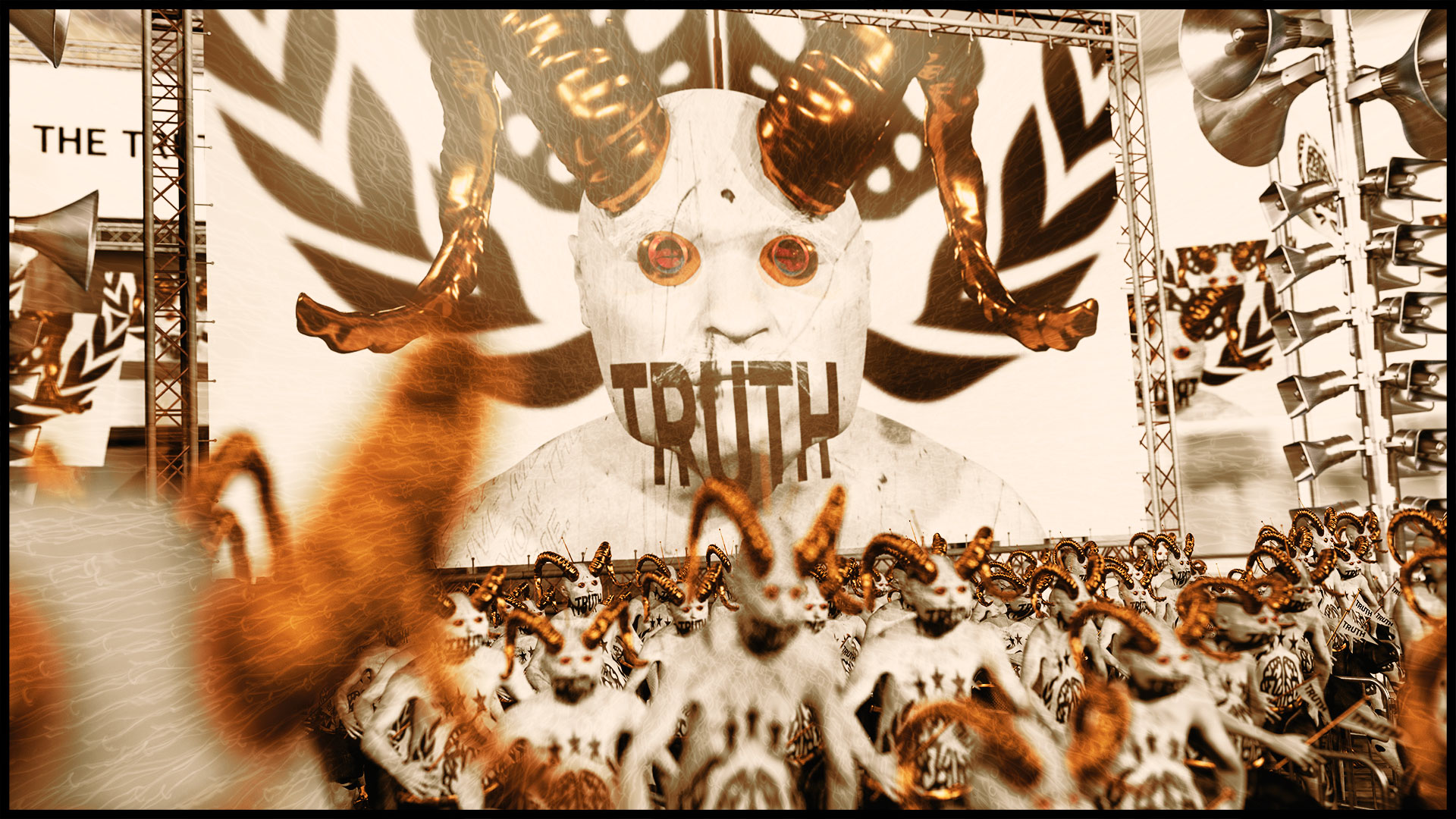
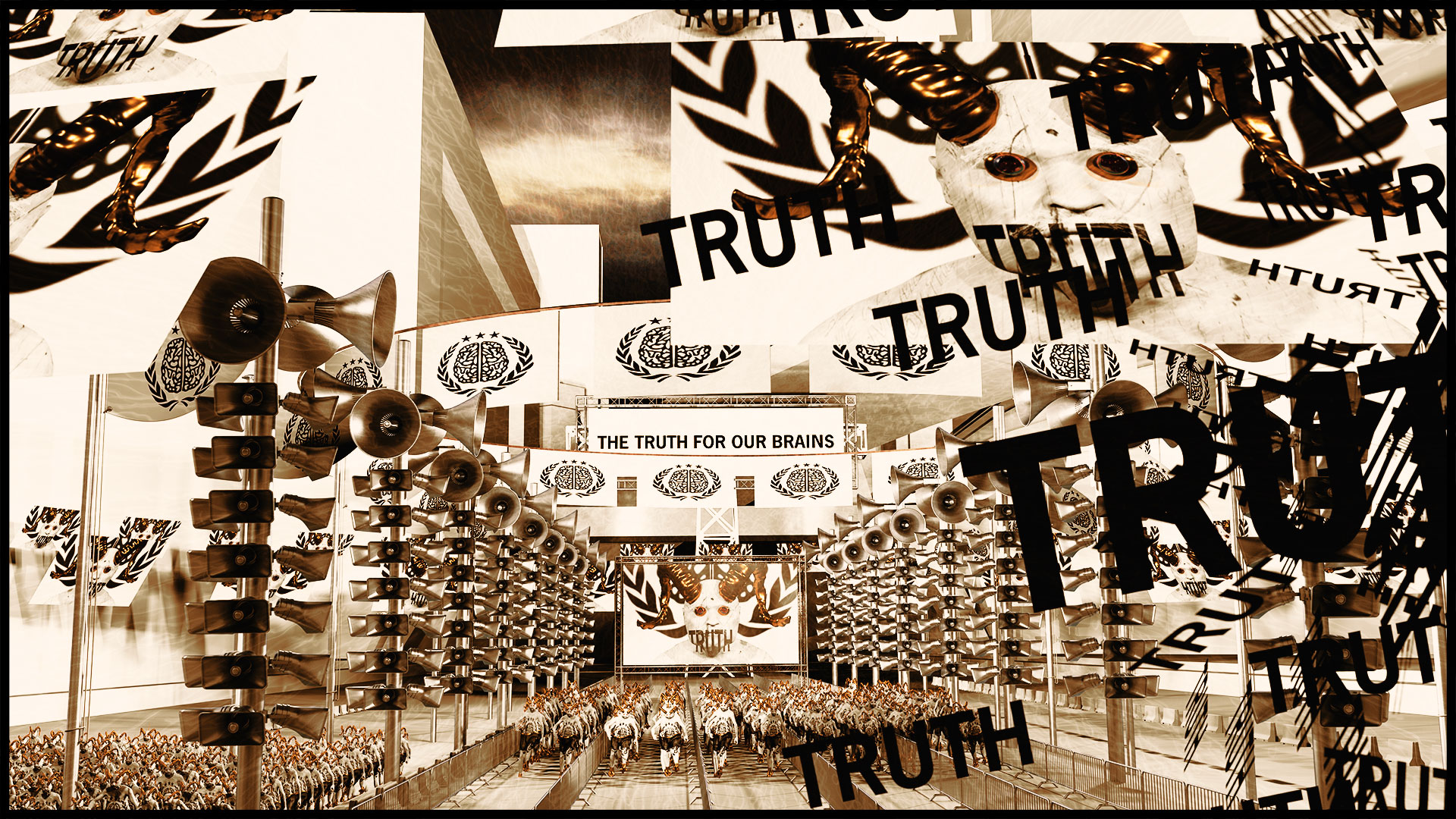
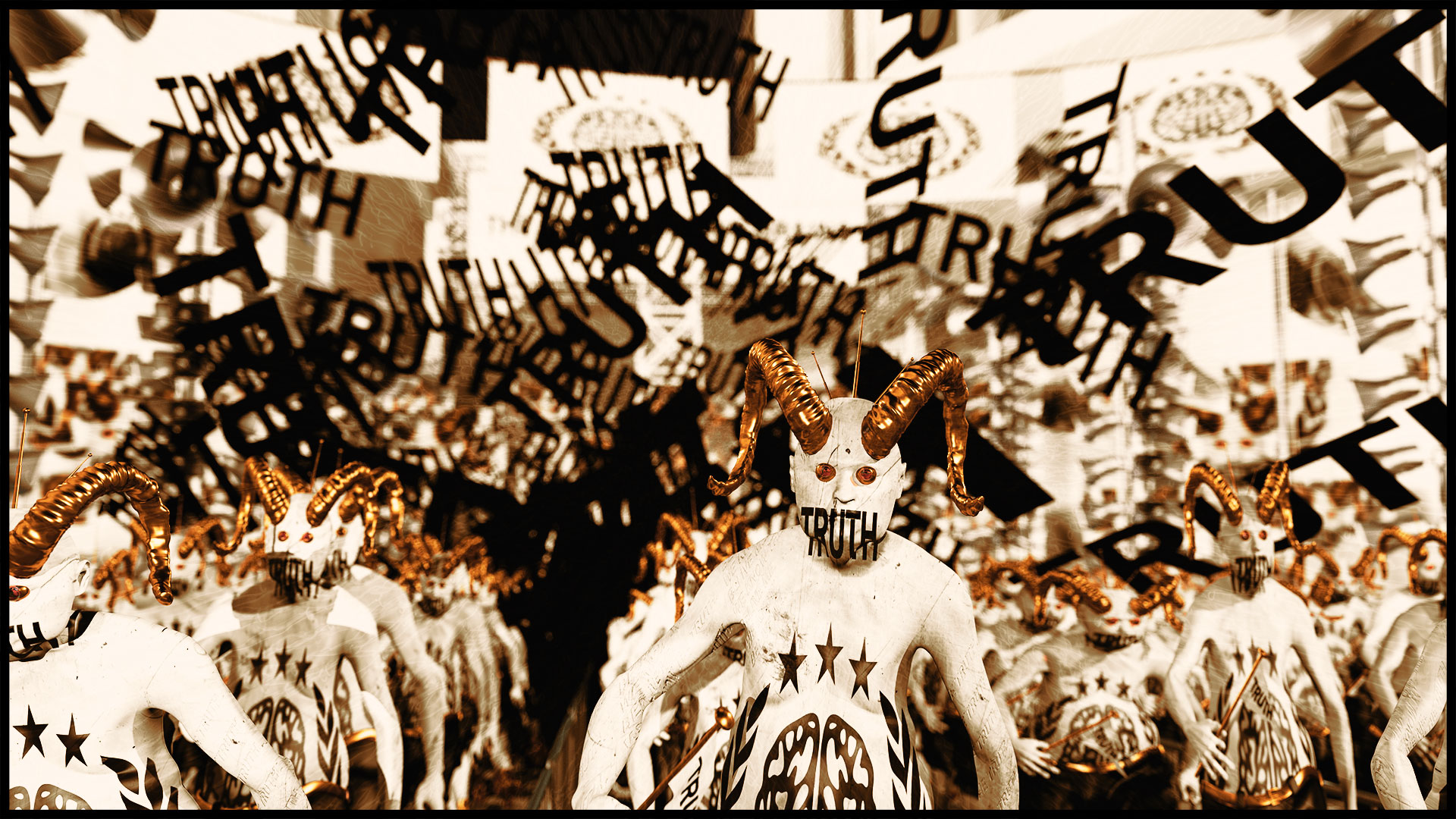
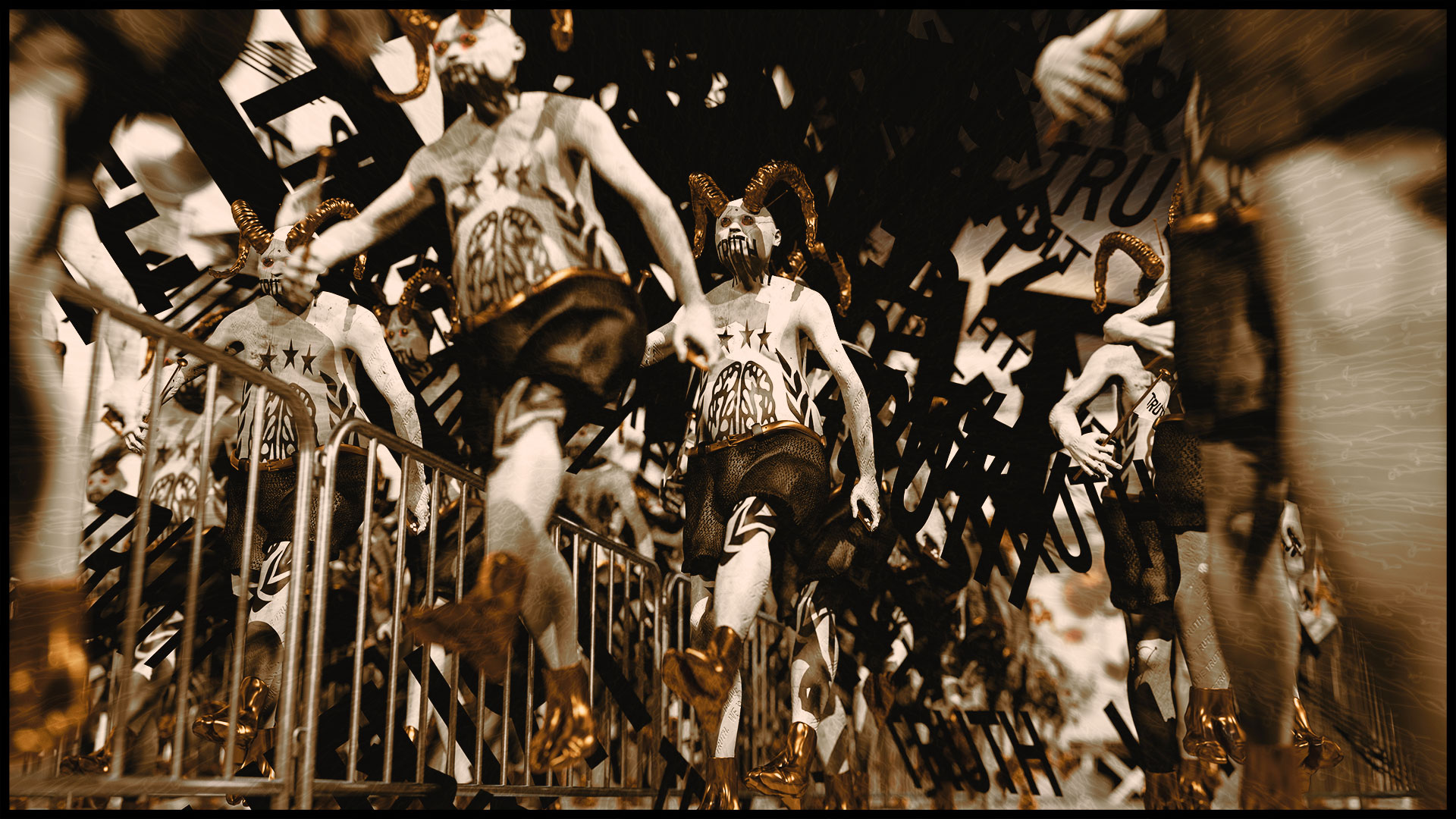
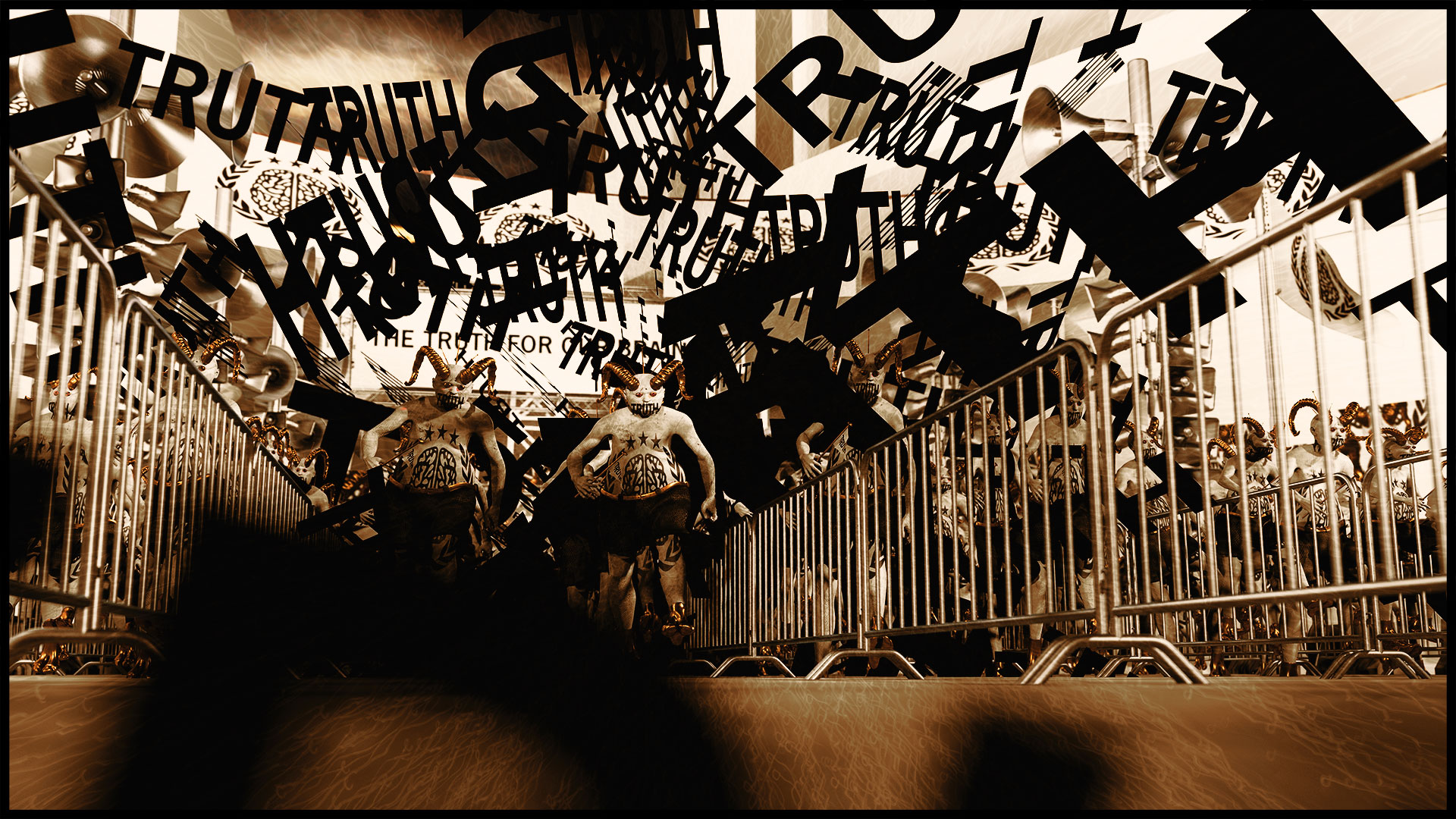
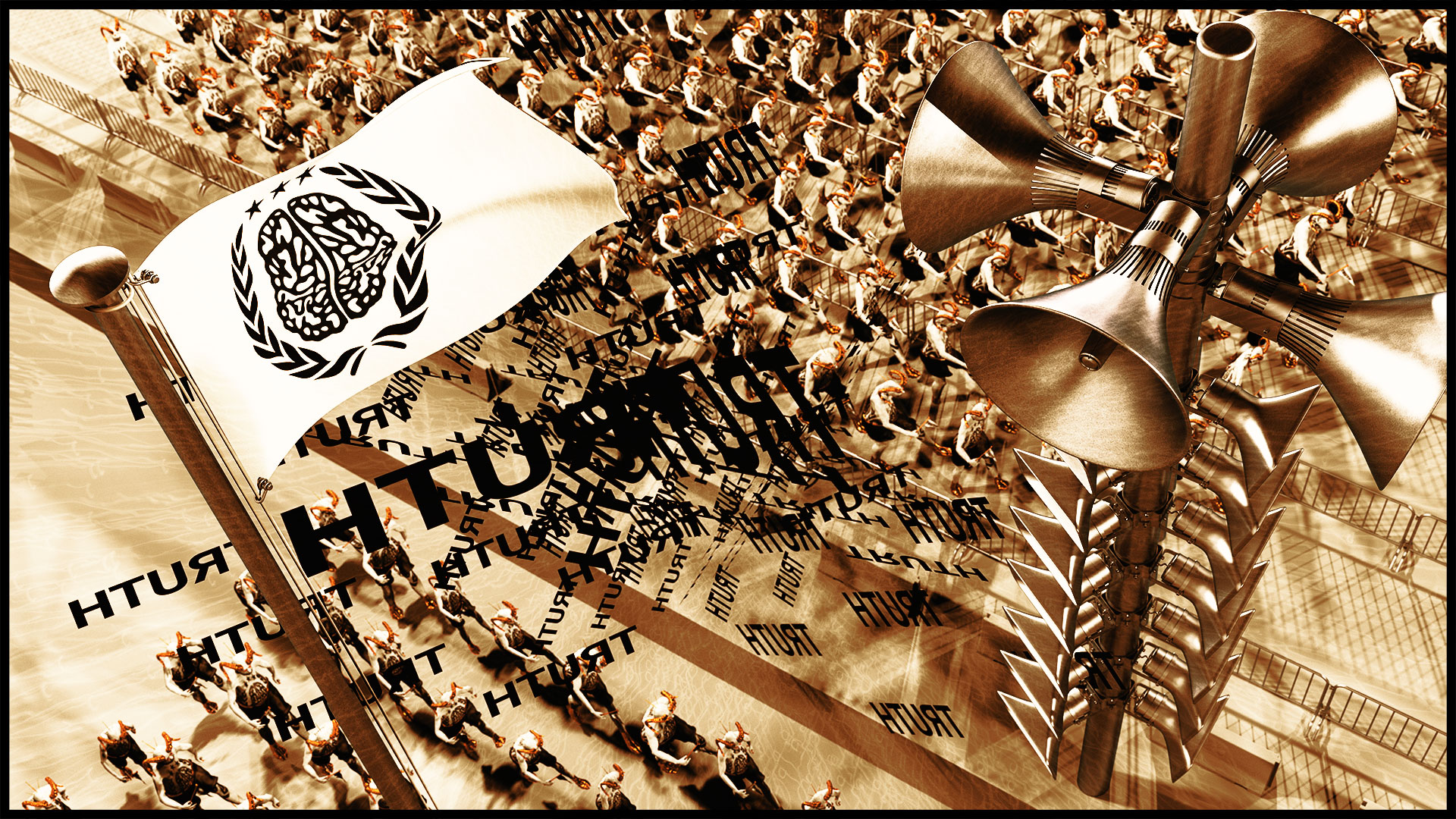
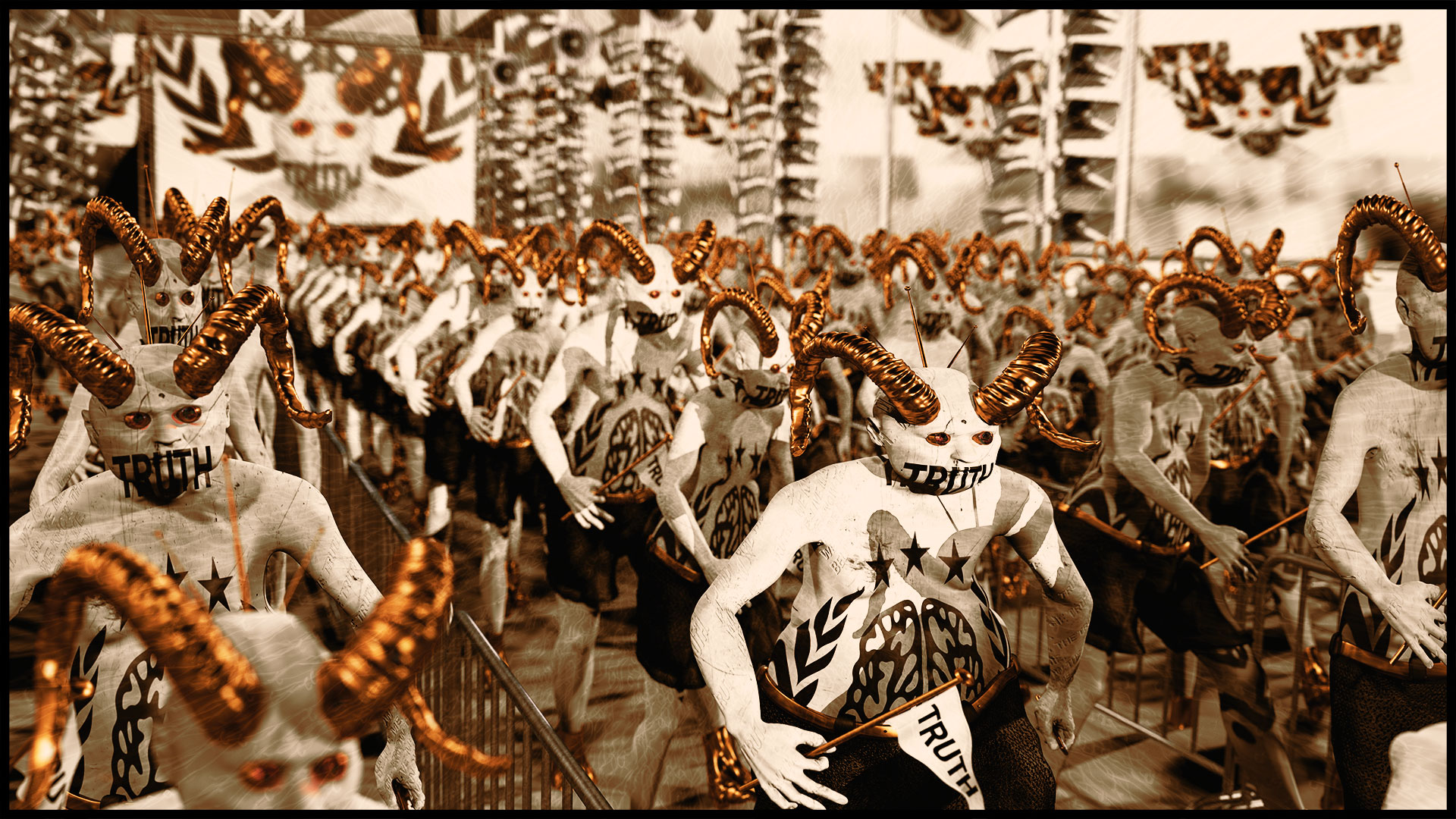
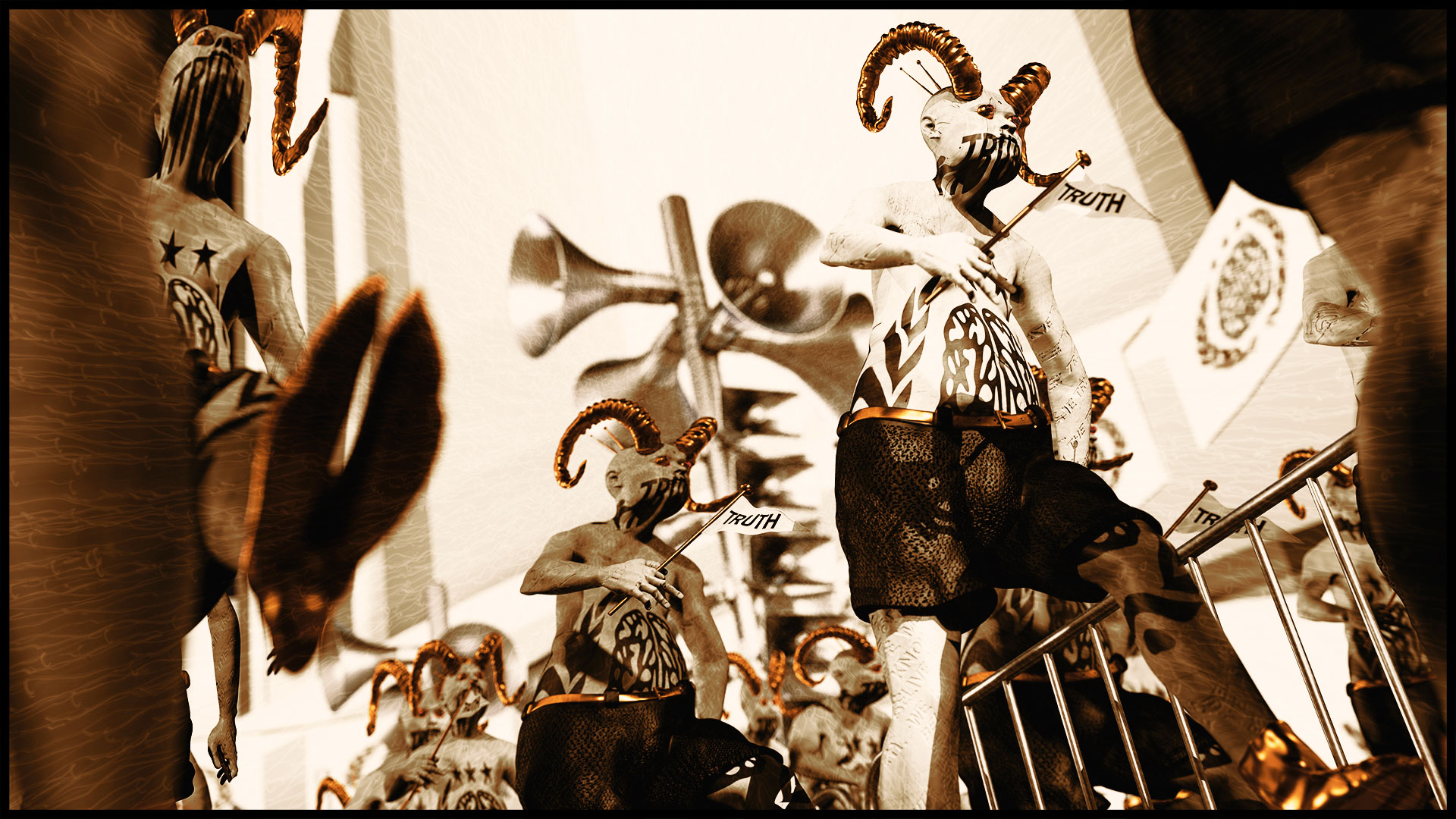

Original human work, created without artificial intelligence.
This work is protected by copyright in all its parts.
© 2023 by Heinz Hermann Maria Hoppe. All rights reserved.
Color and tone value representations on monitors deviate from the original.
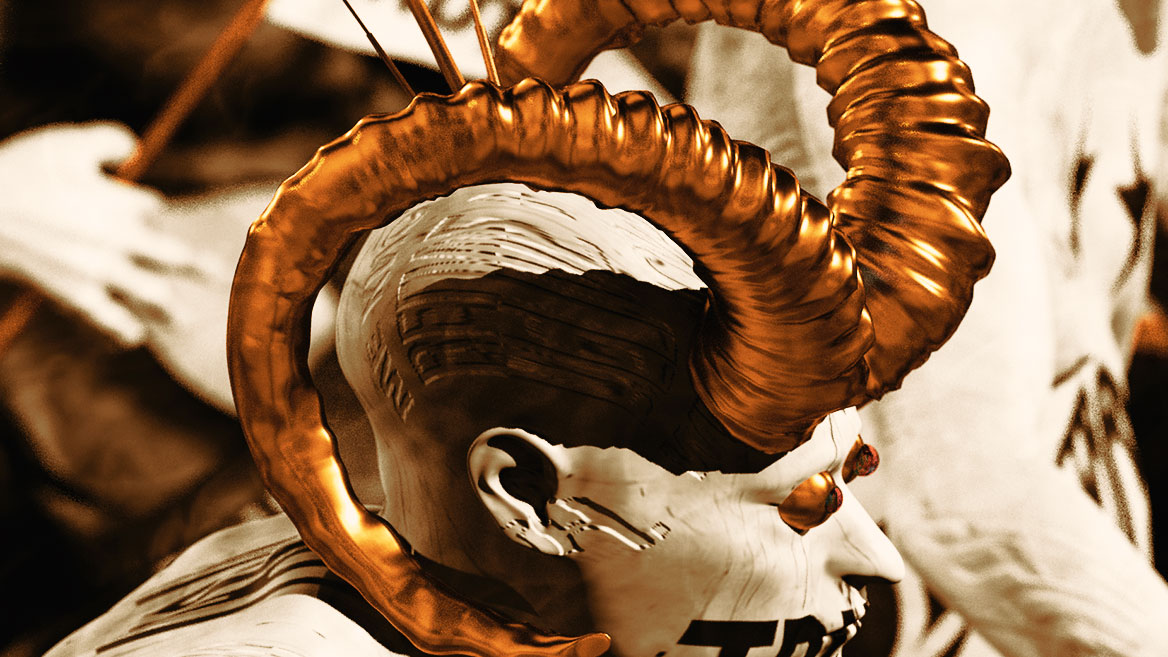
Comment
Author: Heinz Hermann Maria Hoppe
Convictions, even radical ones, are malleable. Attention is the currency, propaganda the toolbox. The classic media of political propaganda can be combined in a modern way: Flags with websites, posters with social media, handbills with messengers. In political talks and on show stages, “loud-speakers” resoundingly serve their target groups. “Enemy images” are driven into people’s heads, according to tried-and-tested principles. Elementary basic needs, such as trust and security, are included. Promise! When everything runs smoothly, new slogans echo in fogged halls. Constantly renewed, for anchoring, fed with “bread and games”, carried on from mouth to mouth and from “app to app”, new, full-bodied convictions grow up. Suitcases full of money are able to bring even the most confused attitudes to the people.
“Propaganda” was originally abbreviated missionary work to the New World and the fight against Protestantism, based on a “Holy Congregation for the Propagation of the Faith”.1 Since the French Revolution, the term has stood for the spread of political ideas. The struggle for “mass and power”2 is ancient. The role of propaganda for armies, to support their war efforts and to recruit new “cannon fodder”, gave the term a bad image. Today we say “psychological warfare” and, as in the past, it also means the infiltration of messages to manipulate the enemy. “Communicative crusades” by parties, coalitions and associations are called “public diplomacy”. Announcements of brand messages have long been subsumed under “public relations”. Meant is always advertising for the interests and for the expansion of power. Contemporary corporate identities should also emphasize the brand essence of political parties, armies and churches. Potential new members want to be addressed in a contemporary manner; it is important to be, remain or become “up to date”.
Respect for other opinions, a fundamental democratic principle, is having a hard time. Scientists, original seekers of truth, are backing away from announcing their research results for fear of “shitstorms”. Universities disinvite speakers with conflict potential, buckle instead of providing podiums of discourse. “Boiling mobs” with radical demands see themselves in sole possession of the truth. Ideological attacks, storms of indignation, anonymous hate triads, demonstrative riots and wanton destruction cannot convince, only provoke. Expressions of opinion do not become more true when they come from loud throats.
On the other hand, government “muzzling” is never a good omen. Own opinions were, historically, rarely really free. Stating personal beliefs can be dangerous even today, life-threatening in some quarters. “In war, truth dies first.” News situations shift like front lines. Spreading enemy propaganda could be punishable by death during World War II. Words like “agitation”, “conspiracy”, and “indoctrination” came to life for it. Threats, security and career promises left flags waving at the front doors of new party members. “Reversed” children even betrayed their own parents. The role that “newsreels”, radio speeches and marches played in the identification with the National Socialists is well known. The elaborate implementation of their corporate identity program is still astonishing today, and not only for graphic designers3. In repressive systems, people often had and still have no choice but to join the cadres in power out of sheer necessity.
Truth is defined differently, depending on the discipline. Without evidence, “absolute” truths are without value, but evidence rarely lasts. Today’s truth can already be “lies and deception” tomorrow. Quotation Thomas Bernhard: »Letzten Endes kommt es nur auf den Wahrheitsgehalt der Lüge an.« (English: In the end it depends only on the truth content of the lie.) The practice, to the realization of selfish truths, begins already in the crawling age. In search of orientation, people get lost in spiritual mazes of “disinformation merchants”, stirred up by charismatic speakers with unconditional convictions. True seducers are not recognized by horns. The tools of their language and psychology for polarizing their followers are extensive: expressions, repetitions, foreshortenings, discolorations, exaggerations, emotionalizing, fomenting conflicts, launching one-sided representations, one-sidedly interpreted opinion polls, supposed “expert opinions” and purchased “research results”.
Psychology describes many cognitive biases that can be used and abused for one’s own goals. Excerpt:4
Apathetic, uncritical consumers are particularly lucrative target groups. How we are “sold”, how to expose attempts at manipulation, how to “get rich” by influencing others, are revealed by countless popular titles. In democratic countries, people publicly resist censorship and brainwashing. However, market research, demoscopy and psychology remain tried-and-tested “scanning methods” across party lines, especially during election campaigns. They have now been joined by another, perhaps the “big brother”, which has been christened artificial intelligence.
So does “everything remain under control?”
Sources
1 Propaganda. In: Wikipedia – The Free Encyclopedia. Date of last revision: 24. May 2023, 06:20 UTC. (Date retrieved: 11. June 2023, 10:44 UTC)
2 Canetti, Elias: Masse und Macht. Fischer Taschenbuch Verlag, Frankfurt/Main, 2014.
3 Koop, Andreas: NS CI. Das visuelle Erscheinungsbild der Nationalsozialisten 1920–1945. Verlag Hermann Schmidt Mainz, 2008.
4 Cognitive bias. In: Wikipedia – The Free Encyclopedia. Date of last revision: 18. May 2023, 17:09 UTC. (Date retrieved: 13. June 2023, 19:02 UTC)
5 Plickert, Philip: Das Institut der großen Antworten. Frankfurter Allgemeine Sonntagszeitung No. 18, May 7, 2023, Economy section, p. 22.
6 Burdy, Robert and Hüther, Gerald: Wir informieren uns zu Tode. Ein Befreiungsversuch für verwickelte Gehirne. Verlag Herder, Freiburg im Breisgau, 2022.
Recommended reading
Chromsky, Noam: Media Control – The Spectacular Achievements of Propaganda. Penguin Random House, 2nd edition.
Mausfeld, Rainer: Warum schweigen die Lämmer? Westend Verlag, Frankfurt/Main, 2021.
Müller, Albrecht: Glaube wenig. Hinterfrage alles. Denke selbst. Westend Verlag, Frankfurt/Main, 2021.